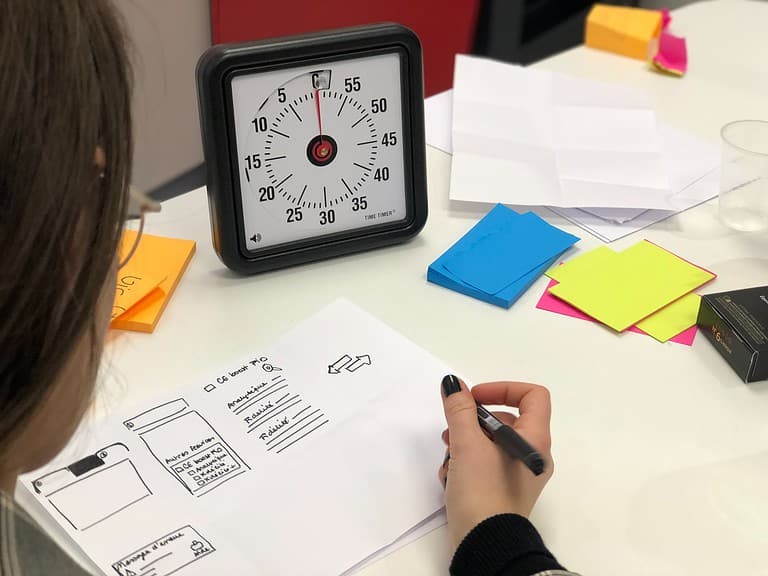Master the 4 Laws of Behavior Change to Transform Your Life
Are you tired of feeling stuck in the same old routines and habits that just don’t serve you anymore? Do you want to finally break free from the cycle of procrastination, self-doubt, and inefficiency that’s holding you back from reaching your full potential?
Well, you’re in luck, my friend. In this blog post, we’re diving deep into the world of behavior change and transformation. In Atomic Habits, his bestselling book, he breaks down the 4 Laws of Behavior Change that will help you make lasting changes in your life.
Get ready to master his 4 laws of behavior change and unlock the key to transforming your life for the better.
Whether you’re a small business owner looking to boost your productivity or a high performer striving for greatness, these proven strategies will help you break free from the grips of negative habits and pave the way for a brighter, more fulfilling future.
So, let’s get ready to revolutionize the way you think, act, and live!
What are Atomic Habits?
At its core, “Atomic Habits” is about understanding the tiny, incremental changes that, when consistently applied, lead to remarkable results. Clear’s four laws help you build good habits:
- Make it Obvious: Our environments heavily influence our actions. By making desired habits visible and easily accessible, you set yourself up for success. Conversely, hiding or removing triggers to avoid bad habits repeat can make them less tempting.
- Make it Attractive: We naturally gravitate towards things we find pleasurable or rewarding. Pairing a new habit with an existing enjoyable activity or simply reframing it to highlight its benefits can significantly boost your motivation.
- Make it Easy: The easier an action, the more likely you will repeat it. Break down complex goals into manageable steps and create a frictionless environment that supports your desired behaviors.
- Make it Satisfying: Immediate rewards reinforce positive habits. Celebrate your wins, no matter how small, and find ways to make the process itself enjoyable to keep you coming back for more.
The Power of Compound Growth
One of the most powerful concepts in “Atomic Habits” is that even marginal self-improvement, when repeated consistently over time, can lead to exponential growth.
Think of it like investing: small, regular contributions can snowball into substantial wealth over the long haul. The same applies to personal growth.
“Atomic Habits” isn’t just theory – it’s a hands-on guide packed with actionable strategies and real-world examples. This book is an invaluable resource if you’re ready to control your habits and unlock your full potential.
The Science Behind Behavior Change
James Clear reveals that habits aren’t just random actions – they’re deeply ingrained patterns wired into your brain. Here’s a glimpse into the science that makes “Atomic Habits” so effective:
Neurological Basis of Actual Habit Formation
Your brain constantly creates neural pathways, strengthening the connections between neurons every time you repeat an action. This is why habits, both good and bad, become automatic over time. By consciously choosing the behaviors you want to cultivate, you’re essentially rewiring your brain for success.
Role of Dopamine and Reward Systems
Dopamine, often called the “feel-good” neurotransmitter, plays a crucial role in habit formation. When you experience something pleasurable or rewarding, your brain releases dopamine, reinforcing the behavior and making you more likely to repeat it. This is why celebrating even small wins is so important – it strengthens the positive feedback loop that drives lasting change.
How Identity Shapes Our Habits, and Vice Versa
Your identity – your beliefs about yourself – profoundly impacts your actions. If you see yourself as someone who prioritizes health, you’re more likely to make healthy choices. Similarly, by consistently aligning with your desired identity, you reinforce that self-perception, creating a powerful cycle of positive change.
What are the Four Laws of Behavior Change?
James Clear breaks down habit formation into four simple yet profound, four laws of behavior: Make it obvious, make it attractive, make it easy, and make it satisfying. Each law builds on the next, providing a roadmap to realize your aspirations.
Law 1: Make It Obvious: Transform Your Environment
The first law, “Make it Obvious,” is where your transformation begins. By understanding the cues that trigger your actions, you gain the power to shape your habits and, ultimately, your life.
Your environment is the silent architect of your habits. Have you ever mindlessly grabbed a snack just because it was on the counter? That’s the power of cues in action. Atomic Habits teaches you how to take control.
Harness the Power of Cues
Your environment is the silent architect of your habits. From the layout of your home to the apps on your phone, your surroundings are filled with subtle triggers that influence your behavior. This Atomic Habits summary teaches you how to take control.
- Harness the Power of Cues: Consciously identify the cues that trigger your current behaviors, both positive and negative. Design your environment to support your goals by making desired habits visible and accessible.
- Identify and Manipulate Environmental Triggers: Every habit has a trigger. Recognize what sparks your unwanted actions and replace them with positive alternatives.
- Use Habit Stacking to Build New Behaviors: Link a new habit to an existing one, making it easier for the new behavior to stick. For example, after your morning coffee, spend five minutes meditating.
- Create a Habit Tracker for Increased Awareness: Track your progress to reinforce positive behaviors and stay motivated. A visual reminder of your successes can be incredibly powerful.
How to Make Good Habits Obvious
Think about the cues that trigger your current behaviors. Rearrange your space to promote your desired habits. Want to read more? Place a book on your nightstand. Trying to eat healthier? Keep a bowl of fruit on the counter.
Use sticky notes, alarms, or even strategically placed objects to remind yourself of your goals. These visual prompts serve as gentle nudges in the right direction.
Starting is often the most challenging part. Clear suggests breaking down new habits into tiny, two-minute actions. Want to exercise more? Start with just two minutes of stretching. This makes it easier to get started and build momentum over time.
Law 2: Make It Attractive: Boost Your Motivation
We’re naturally drawn to things we find pleasurable or rewarding. This is where the second law of human behavior change comes in. By making your habits more appealing, you increase the likelihood of sticking with them over the long haul.
The Role of Anticipation and Desire
Our brains are wired to seek out pleasure and avoid pain. When you anticipate something enjoyable, your brain releases dopamine, a neurotransmitter associated with motivation and reward. This creates a powerful feedback loop, making you more likely to repeat behaviors that bring you pleasure.
Temptation bundling is a clever strategy that combines a habit you want to do with a habit you need to do. For example, you could only allow yourself to watch your favorite show while exercising or pair your morning coffee with a few pages of reading.
A motivation ritual is a simple action you take before engaging in a desired habit. It could be as simple as putting on your workout clothes or setting out your yoga mat. These rituals signal to your brain that it’s time to take action, making it easier to get started.
By harnessing the power of anticipation, temptation bundling, and motivation rituals, you can transform mundane tasks into appealing experiences that you actually look forward to.
How to Build Habits Using Social Influence
- Join a culture where your desired behavior is the norm: Surround yourself with people who already embody the habits you want to develop. Their influence can be incredibly motivating and make the desired behavior feel more natural and achievable.
- Find an accountability partner or group: Having someone to share your goals with and hold you accountable can be a game-changer. Whether it’s a friend, family member, or an online community, the support and encouragement can make all the difference.
- Use habit contracts to reinforce commitment: Write down your goals and the steps you’ll take to achieve them. Share this habit contract with someone you trust, and have them hold you accountable. This adds a layer of external motivation and reinforces your commitment.
By tapping into the power of social influence, you can make positive changes more enticing and create an environment where success feels inevitable.
Law 3: Make It Easy: Reduce Friction in Your Journey
Our brains are wired to conserve energy. We naturally gravitate towards actions that require the least amount of effort. This is why the third law of behavior change is so crucial – by making your desired habits as easy as possible, you significantly increase the likelihood of them becoming ingrained in your routine.
The Path of Least Resistance
- Decrease friction for good habits: Look for ways to streamline the actions you want to adopt. Prep your gym clothes the night before, set up automatic savings transfers, or keep healthy snacks readily available. Small tweaks like these can make a world of difference.
- Increase friction for bad habits: Make unwanted behaviors more challenging to engage in. If you’re trying to reduce screen time, hide your phone in a drawer or use an app that blocks distracting websites. The extra effort required can deter you from indulging in those habits.
- Utilize the Two-Minute Rule for Habit Scaling: Remember the Two-Minute Rule from Law 1? It’s equally effective in Law 3. Instead of trying to meditate for 20 minutes right away, start with just two minutes. Once you’ve established the good habit, you can gradually increase the duration over time.
By strategically reducing friction and making positive actions the default, you set yourself up for success in the long run.
How to Master Your Environment for Effortless Execution
Each decision you make throughout the day depletes your willpower. By prepping your environment in advance, you eliminate unnecessary choices and conserve your energy for the actions that truly matter. For instance, pack a healthy lunch the night before or lay out your workout clothes in the morning.
Let technology work for you by automating tasks that align with your goals. Set up automatic bill payments, use meal planning apps, or schedule recurring reminders for important habits like exercising or reading.
The right tools can make a world of difference. Consider investing in a fitness tracker, a comfortable workspace, or noise-canceling headphones if you work from home. These small investments can significantly impact your overall success.
Law 4: Make It Satisfying: Reinforce Positive Behaviors
Our brains are wired to seek pleasure and avoid pain. This means that the immediate aftermath of an action strongly influences whether we repeat it. By making your positive habits satisfying, you create a positive feedback loop that reinforces those behaviors and makes them more likely to stick.
The Power of Immediate Rewards
Often, the benefits of good habits are delayed. For example, you won’t see the results of exercising today but will over time. To combat this, pair your habits with immediate rewards. This could be as simple as enjoying a relaxing bath after a workout or indulging in a healthy treat after a productive work session.
The simple act of checking off a task or seeing your progress visually can trigger a sense of accomplishment and satisfaction. Use a habit tracker, journal, or app to record your wins and celebrate your progress.
Set up a system where you reward yourself for reaching specific milestones. Make sure the rewards align with your overall objectives. For example, if your goal is to save money, don’t reward yourself with a shopping spree. Instead, treat yourself to an experience or something that supports your financial goals.
How to Overcome the Delayed-Return Environment
While the ultimate reward might be in the future, many better habits offer immediate and continuous improvement benefits as well. Focus on those immediate positives. For example, exercising might not lead to visible results overnight, but you’ll likely feel more energized and focused right away.
Find small, immediate rewards that you can link to your desired habits. This could be as simple as enjoying a cup of tea after finishing a chapter of a book or taking a relaxing bath after a long day of work.
Understand that meaningful change takes time. Focus on consistently showing up and trusting that the rewards will come. Keep reminding yourself of the bigger picture and the long-term benefits you’re working towards.
How to Break Bad Habits Using the Inverse Laws
While the four laws primarily focus on building positive habits, they offer a robust framework for breaking negative ones as well. By simply inverting each law, you can create a strategy to eliminate unwanted behaviors from your life:
- Make it Invisible: Just as you make good habits obvious, do the opposite for bad ones. Remove the triggers that lead you down the wrong path. Hide tempting snacks, uninstall distracting apps, or avoid environments associated with negative behaviors.
- Make it Unattractive: Reframe the way you think about the unwanted habit. Instead of focusing on the short-term pleasure, highlight the negative consequences. Remind yourself how it hinders your progress, drains your energy, or takes you further away from your goals.
- Make it Difficult: The easier an action, the more likely you will repeat it. So, make those bad habits harder to engage in. Increase the friction by adding extra steps or introducing obstacles. For example, if you want to spend less time on social media, log out of your accounts or place your phone in another room.
- Make it Unsatisfying: Just as positive reinforcement strengthens good habits, negative reinforcement can weaken bad ones. Attach immediate negative consequences to the unwanted behavior. This could be a small self-imposed penalty or simply a reminder of the negative impact it has on your life.
By flipping the script and applying these inverse laws, you’ll create a robust business system that helps you break free from those pesky habits that have been holding you back. Remember, change takes time and effort, but with the right strategies, you can overcome any obstacle and create the life you desire.
How to Replace a Bad Habit with a Good One
Simply trying to suppress a bad habit rarely works. Instead, focus on replacing it with a healthier alternative that satisfies the same underlying need.
- Identifying the underlying needs fulfilled by bad habits: Every habit, even a negative one, serves a purpose. Maybe you reach for junk food when stressed or scroll through social media when you feel lonely. By understanding the underlying need, you can find a more positive way to address it.
- Substituting positive behaviors that meet the same needs: Once you’ve identified the need, brainstorm alternative actions that fulfill it in a healthier way. If stress drives you to snack, perhaps a brisk walk or a few minutes of meditation could provide the same relief. If you’re seeking connection, reach out to a friend or join a group activity instead of mindlessly scrolling.
- Creating a plan for managing triggers and cravings: Anticipate the situations that typically trigger your bad habit. Have a plan in place to deal with those triggers and cravings when they arise. This might involve having healthy snacks on hand, scheduling regular social activities, or developing a relaxation routine.
By understanding the root cause of your unwanted behaviors and finding positive substitutes, you can create lasting change that feels natural and empowering.
Final Thoughts on the 4 Laws of Behavior Change
And there you have it! We’ve covered the 4 laws of behavior change and their inverses, dissecting the secrets to breaking bad habits and building good ones. From making it obvious and attractive to making it small and consistent – these laws are the ultimate weapons in our arsenal against unwanted behaviors.
But let’s be real, changing habits is no easy task. It takes determination, discipline, and a big old dose of self-awareness. But fear not, my friends, for we can achieve our goals and transform our lives for the better.
So now it’s time for us to put this knowledge into action. I challenge each and every one of you to choose one habit you want to build or break and apply the 4 laws of behavior change. It could be as simple as drinking more water or as challenging as quitting smoking. The important thing is to start small and be consistent.
So why not give it a shot? Imagine where you could be a month from now if you started today. Envision how different your life could look if you took control of your own habits instead of letting them control you.
So go forth, make yourself proud, and let’s create a positive ripple effect in this world, one atomic habit at a time!







